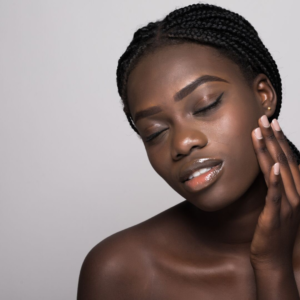Treating Androgen Excess in PCOS

Androgens are an essential part of women’s health. They are responsible for muscle growth, bone development, libido, keeping body fat low and a general sense of wellbeing. However, too much of anything isn’t good. When these hormones get too high the result is acne and/or a more masculine appearance. This can include coarse hair growth on the chin, upper lip, mid-chest, abdomen and back referred to as hirsutism. As well as thinning of hair on the head, and changes in body composition. The symptoms of androgen excess are extremely common in PCOS and are often the most bothersome symptoms for women with this syndrome.
There are a variety of androgens that can play a role in PCOS. These include testosterone, DHEA, Androstenadione and Dihydrotestosterone (DHT). All of these hormones are produced by both the ovaries and the adrenals in different amounts. Some women with symptoms of androgen excess have high testosterone levels however, some will have normal testosterone levels because their problem with DHEA or high conversion of testosterone to DHT which is a more potent androgen. If a woman has symptoms of PCOS and are only tested for testosterone, their diagnosis may be missed. In addition, some women have symptoms of high androgen levels without actually having blood levels that reflect that. This is because blood tests won’t reflect activity of the 5-alpha reductase enzyme which is responsible for an increased rate of conversion from testosterone to DHT which can be increased by insulin resistance. Having appropriate testing is essential to treating androgen excess in PCOS. Once we know exactly what the cause is an appropriate treatment plan can be made to address your specific hormone imbalance. Here is a short list of some natural treatment options for androgen excess in PCOS.
4 Natural Treatments for Androgen Excess in PCOS
The following treatment options can be effective for the treatment of hirsutism, acne, and androgenic hair loss.
Licorice
This herb has been shown to significantly reduce testosterone levels in women after just 1 month of use. In addition, licorice contains isoflavones which are phytoestrogens and exhibit a weak anti-androgenic effect. However, licorice can increase blood pressure and is therefore not recommended for women with high blood pressure levels.
White Peony-
White peony has been shown to decrease the production of testosterone as well as influence conversion of testosterone to estrogen. It is often used in conjunction with licorice in the treatment of androgen excess in PCOS. In addition, the combination of Licorice and Peony can be helpful in regulation of menses.
Green Tea-
The antiandrogenic effects of green tea have been demonstrated in both men with benign prostate hyperplasia (BPH) and women with PCOS. This effect is said to be attributed to its inhibition of the enzyme 5-alpha reductase which converts testosterone to the stronger DHT. Green tea may also be able to increase Sex Hormone Binding Globulin (SHBG) which is responsible for binding to testosterone and therefore decreasing its activity in the body. In addition, the metabolic effects of green tea are said to help with weight loss which can help to improve insulin sensitivity and further decrease testosterone activity in the body.
Vitamin D-
Vitamin D levels are EXTREMELY important in women with PCOS. Low Vitamin D status has been associated with several features of PCOS including ovulatory dysfunction, insulin resistance and high androgen levels. In addition, research indicates that vitamin D supplementation has a positive role in hormone balance, improving metabolic outcomes and fertility in women with PCOS.
This is not an exhaustive list of options for dealing with androgen excess. If you have been dealing with symptoms such as acne, hirsutism or male-pattern hair thinning, there are treatment options. Book an appointment to be properly assessed and get started on your individualised treatment protocol.
In health,
Dr. Lisa Maddalena, ND
Leave a Reply